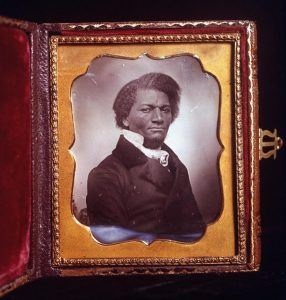From History:
 Frederick Douglass, the most influential black man in 19th-century America, wrote 1,200 pages of autobiography, one of the most impressive performances of memoir in the nation’s history. The three texts included Narrative of the Life of Frederick Douglass, An American Slave (published in 1845); his long-form masterpiece My Bondage and My Freedom, (1855); and finally, The Life and Times of Frederick Douglass (1881, revised in 1892). During his lifetime, they launched him to national prominence; since then, they have become essential texts of U.S. history.
Frederick Douglass, the most influential black man in 19th-century America, wrote 1,200 pages of autobiography, one of the most impressive performances of memoir in the nation’s history. The three texts included Narrative of the Life of Frederick Douglass, An American Slave (published in 1845); his long-form masterpiece My Bondage and My Freedom, (1855); and finally, The Life and Times of Frederick Douglass (1881, revised in 1892). During his lifetime, they launched him to national prominence; since then, they have become essential texts of U.S. history.
In them, Douglass tells his extraordinary personal story—of the slave who endured and witnessed untold acts of brutality, then audaciously willed his own freedom. He describes the young slave who mastered the master’s language, and who saw to the core of the meaning of slavery, both for individuals and for the nation. And then he captures the multiple meanings of freedom—as idea and reality, of mind and body—as no one else ever did in America. But as in so many autobiographies, there is also much Douglass holds back, details that don’t fit his carefully constructed narrative. He says little, for instance, of his complex family relationships—including his second marriage to a white woman—or his important female friends. Nor does he ever really reveal his true feelings about his improbable odyssey from a fugitive slave and radical outsider, a black man who gained fame for eloquently trumpeting the nation’s harshest truths, to a political insider warmly welcomed by Abraham Lincoln in the White House.
More here. (Note: Throughout February, we will publish at least one post dedicated to Black History Month)
